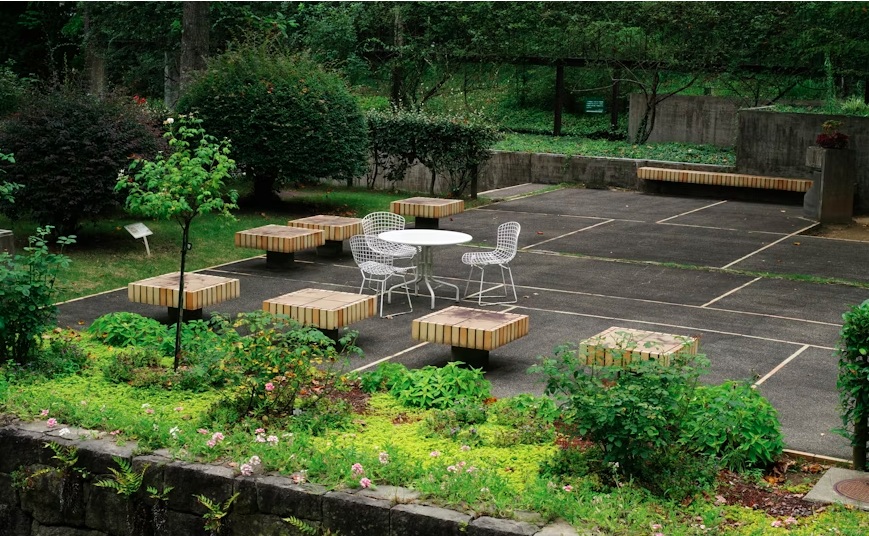A satisfying method to blend sustainability, comfort, and beauty is to design an eco-friendly backyard. It can minimize waste, conserve water, and attract beneficial wildlife. Moreover, thoughtful backyard design conserves resources and fosters a serene and balanced atmosphere.
Softscaping plays a crucial role in crafting an eco-friendly backyard that feels alive and in tune with nature. It turns your outdoor space into a lively and sustainable sanctuary by adding texture, color, and seasonal charm. Many other small yet thoughtful elements can make a difference.
This article explores key strategies to ensure your backyard stays beautiful and viable for years to come.
Choose Sustainable Materials
A natural, long-lasting, eco-friendly garden requires sustainable materials. As University of the Built Environment highlights, the growing embodied emissions from standard materials are prompting construction companies to explore sustainable alternatives. This approach minimizes the carbon footprint of their building endeavors.
These sustainable materials help decrease the demand for new resources, fostering a more circular and thoughtful design philosophy. They fit right into the natural landscape, letting your outdoor area age beautifully without the hassle of constant updates.
Your backyard will be sturdy throughout the seasons and environmentally friendly if you focus on long-lasting and renewable materials. Each eco-friendly decision helps create a backyard that showcases your commitment to the planet.
Grow Native Plants
One of the best ways to embrace an eco-friendly backyard is to choose native plants. The National Wildlife Federation states that native plants flourish in the unique soils, moisture levels, and weather conditions of your area. It means you won’t need to water or fertilize them as much. They often develop deeper root systems, which help reduce the need for watering, manage rainwater runoff, and keep the soil healthy.
Plus, native plants play a crucial role in supporting biodiversity by providing food and shelter for local wildlife such as birds, bees, and butterflies. When you select a mix of local flowers, shrubs, and grasses, you’re not just beautifying your backyard. You’re also fostering a balanced and colorful ecosystem.
These tough plants endure drought and seasonal changes, making them a wise choice for keeping your backyard looking great. Selecting native plants improves the local environment and revitalizes your backyard.
Consider Softscaping
Softscape elements, like trees, shrubs, flowers, and grasses, come together to create a lively and dynamic backyard. Furthermore, when you plan your softscaping thoughtfully, it can help maintain soil health and improve water retention, which reduces erosion and runoff. You can easily adapt your backyard as the seasons change, showcasing a beautiful array of colors and plant types.
According to C& H Landscaping, softscaping is all about creating lush, green environments that can range from perfectly manicured lawns to wild, natural gardens. It emphasizes the importance of choosing the right plants to design a garden that looks great and supports the ecosystem.
Incorporating organic mulches, ground covers, and drought-tolerant plants helps minimize water consumption and curb weed growth. You can create a thriving backyard that benefits the environment by combining softscaping with environmentally friendly practices.
Limit Water Wastage
Water conservation is essential to building an ecologically sound backyard that safeguards your natural resources and thrives. Nearly half of the water you use outside can be wasted, according to the EPA. Factors like wind, evaporation, and inefficient irrigation methods can lead to significant losses. In fact, a household with an automatic irrigation system that isn’t well-maintained can waste as much as 25,000 gallons of water each year.
Begin by selecting drought-resistant or native plants that don’t need constant watering. When you group plants that require similar amounts of water, you can customize your irrigation approach and prevent overwatering. Using mulch in your garden beds keeps the soil moist for longer. It means you’ll spend less time watering your plants.
Additionally, reducing lawn space and opting for artificial grass or ground covers can help save water. Combining intelligent planting with mindful irrigation and harvesting strategies can maintain a lush backyard while making the most of precious water resources.
Install Solar Lighting
A great option to increase safety and create a beautiful atmosphere while using less energy is to install solar lighting in your backyard. The Department of Energy claims that outdoor solar lights require little upkeep and are easy to install. The great thing about these lights is that they won’t bump up your electricity bill.
Outdoor solar lighting is ideal for a wide array of household needs, including pathway light sets, freestanding lamp posts, and security lights. Position them thoughtfully along walkways, in garden beds, or on patios to showcase your favorite features and enhance visibility.
The great thing is that most solar lights are easy to set up, with no wiring needed. You usually need to push stakes into the ground or attach fixtures to walls or posts. Regularly cleaning your solar panels to remove dust and debris is essential for optimal performance.
FAQs
How to do sustainable gardening?
Sustainable gardening is all about teaming up with nature to cultivate plants. Start by enriching your soil with compost, avoiding harsh chemicals, and conserving water by choosing native or drought-resistant plants. Don’t forget to rotate your crops and plant companions to keep pests at bay. And remember, reusing garden waste is a smart move.
How do I make my yard really green?
If you want your backyard to be a stunning shade of green, the key is to focus on the soil. Enrich it with compost and organic matter. Pick grass that’s well-suited to your climate, and water it thoroughly but not too often. Use natural fertilizers, avoid harsh chemicals, and tackle weeds the organic way for a beautiful, thriving lawn.
How to budget for a backyard upgrade?
When planning a backyard upgrade, the first step is to figure out a budget that works for you. Take some time to look into labor and material costs, focusing on the essentials. If your budget is tight, consider breaking the project into phases. And remember, it is vital to think about how to ensure everything is durable and easy to maintain.
Building an eco-friendly backyard is a great way to connect with the environment and promote sustainability. This space can become a tranquil refuge that supports local wildlife and helps preserve valuable resources.
Eco-friendly landscaping boosts your quality of life by creating a space that promotes relaxation, wellness, and joy. With planning and care, your backyard can become a beautiful symbol of sustainability and natural charm for many years to come.

